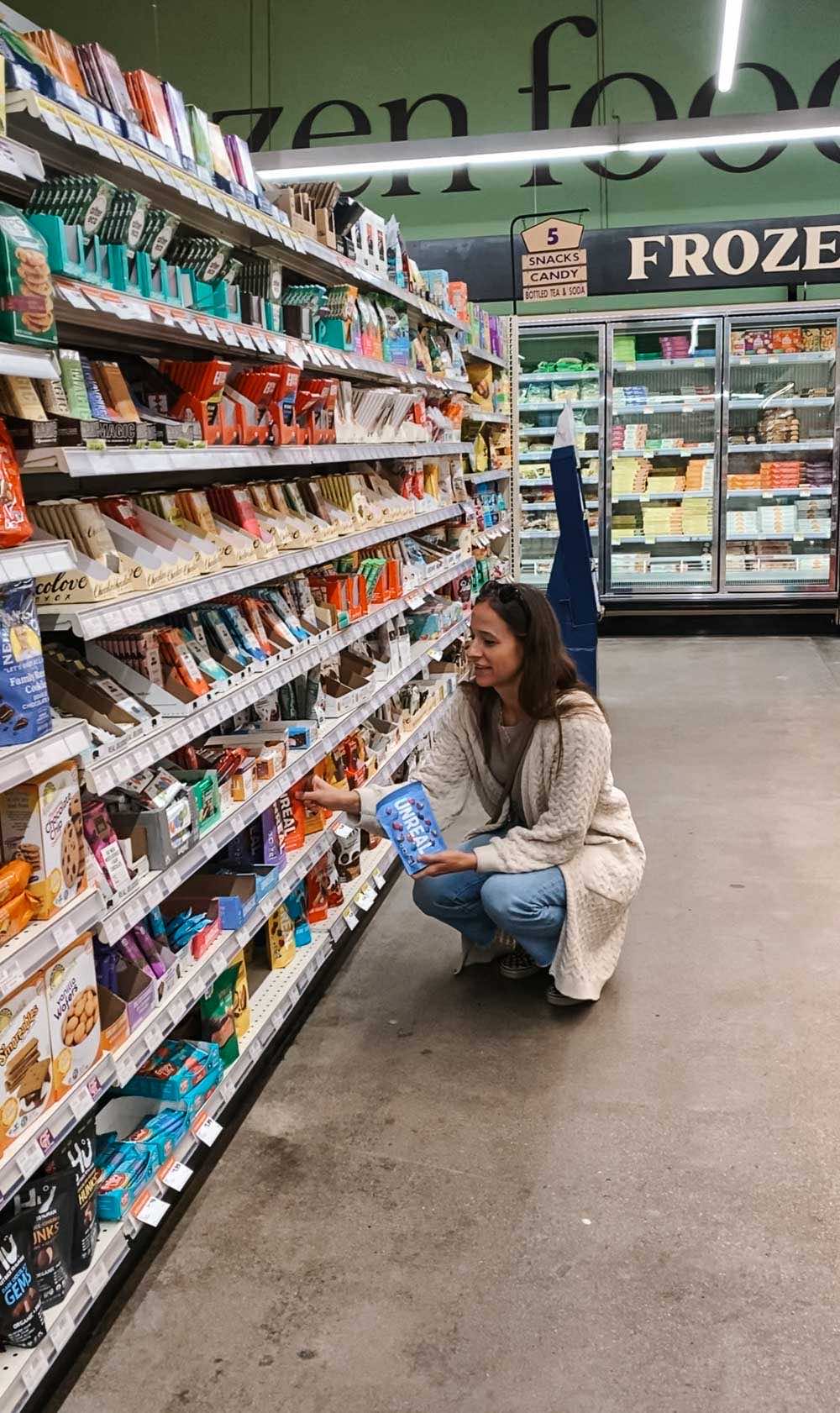The BEST Tips for Reading Food Labels
This post may contain affiliate links. Please read my Disclosure & Disclaimer Policy for more information.
Sharing the BEST tips for reading food labels. Making it easier to choose good options when navigating the grocery store.

When it comes to grocery shopping, I recommend going to the store after you’ve finished meal planning for the week, with a grocery list in hand. This not only saves time and money, but also stress. Take note of the best time to visit your local grocery store as well. I tend to go grocery shopping Thursday evenings, as the store tends to be less busy and shelves are stocked earlier that day.
Sharing the BEST Tips for Reading Food Labels
Front of the Package Claims
When it comes to the claims on the front of the package, many of them can be deceiving. To save both time and confusion, turn the package over and begin reviewing the nutrition facts and ingredient lists.
Tips for Reviewing Nutrition Facts
When I first began my health journey, I was studying to become a dietitian in undergrad. To begin my day, I would consume a flavored coffee from a local coffee shop paired with a breakfast sandwich or a scone. It wasn’t until I began using a food journal that I realized I was consuming over 80-100 grams of added sugars per day, with most of that sugar coming from my breakfast choice. For reference, staying under 25 grams of added sugars per day is recommended. Once I began reducing my added sugar consumption, my headaches went away, joint and teeth pain began to diminish, and I had more energy to get through those busy days.
Once I realized how much sugar was present in many of the foods I was consuming, I began studying the back of food labels. This is when I discovered some of my favorite brands with clean labels that also came with more protein and fiber, and less added sugars and sodium.
When it comes to reading food labels, always review the serving size first. Some brands can be tricky with this area! Next, follow the tips listed below to select the best option.
What to Limit/Stay Away From
- Saturated fats. A diet high in saturated fats can lead to heart disease. Most of the saturated fats consumed within the Standard American Diet come from highly processed meats such as microwaveable bacon and breakfast sausage, and packaged foods such as chips and baked goods.
- Sodium. Too much sodium consumed per day can lead to high blood pressure. The sodium commonly found within packaged foods is heavily processed as well – focus on purchasing brands that contain low amounts of sodium.
- Added Sugars. Staying under 25 grams of added sugar per day is easier said than done. Be mindful of the beverages you’re consuming – this is where many sugars will be hidden!
The less saturated fats, sodium, and added sugars we consume per day, the less inflammation we will have within our system. As we lower inflammation, we will experience less headaches, stomach aches, joint pain, and cavities, all while reducing our risk of developing chronic diseases such as obesity, diabetes, and heart disease, to name a few.
What to Look For
- Fiber. If I’m looking at bread, English muffins, crackers etc. I tend to spend time reviewing how much fiber is present per serving. Aiming for 25-35 grams of fiber consumed per day can help to improve digestion, along with keeping you feeling fuller for longer.
- Protein. This macronutrient is important for a multitude of reasons. When I’m looking for a yogurt to consume, for example, Greek yogurt tends to be higher in protein when compared to plant based yogurts.
Reviewing Ingredient Lists
When it comes to purchasing packaged foods, reviewing the ingredient list is where I spend most of my time. Avoiding packaged foods that contain inflammatory vegetable oils (including but not limited to canola oil, sunflower oil, safflower oil, corn oil, soybean oil, palm oil), artificial colors, preservatives, artificial sweeteners, natural flavors, sodium nitrites, MSG (monosodium glutamate), xanthan gum, carrageenan, and other additives, is beneficial to overall health. Not all ingredients are created equally. Avoid manufactured and lab created ingredients and instead, look for packaged foods that contain natural ingredients; ones you know and understand.
The less ingredients, the better! Another rule of thumb – if you don’t know what many of the ingredients are, the packaged food is likely heavily processed. Spend time looking for a healthier alternative. For example, if you love doritos, swap for nacho chips – compare the two ingredient lists. You can immediately tell the second option is the better choice!
When feeding my body with clean ingredients, I feel good, have more energy, more mental clarity, and less food cravings. Not to mention, home cooked meals taste better with high quality ingredients
Once you implement reading food labels and ingredient lists when grocery shopping, you will find brands that become your go-to, making grocery shopping less stressful and faster to do. Have any questions regarding my tips for reading food labels? Comment below!

